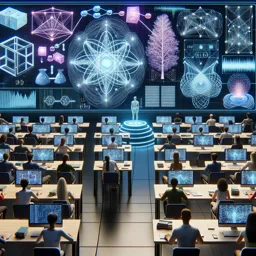What Is Computer Vision?
Computer vision is a dynamic branch of artificial intelligence (AI) that enables machines to understand and make decisions based on visual inputs like images and videos. By emulating human sight, these systems extract valuable information by identifying objects, detecting patterns, and analyzing scenes.
Key Applications of Computer Vision
- Healthcare: AI-powered image analysis enhances diagnostics by identifying tumors, classifying skin conditions, and assisting in surgical planning.
- Automotive: Autonomous vehicles depend on computer vision to interpret traffic signs, detect pedestrians, and monitor road conditions for safe driving.
- Retail: Stores use visual analytics for customer behavior tracking, automated checkouts, and theft prevention through surveillance and facial recognition.
- Manufacturing: Vision systems inspect products for defects, optimize assembly lines, and maintain quality assurance without human oversight.
- Agriculture: Drones and satellite imagery help monitor crop health, identify pests, and guide precision farming efforts.
- Security: Surveillance solutions use computer vision to track movements, recognize individuals, and issue real-time alerts for suspicious activity.
How Computer Vision Works
Computer vision relies on deep learning, especially convolutional neural networks (CNNs), which are trained on massive datasets to recognize visual features such as shapes, textures, and edges. These models can classify images, detect anomalies, segment objects, or even track motion across video streams.
Benefits and Challenges
- Benefits: Improved efficiency, reduced human error, scalable analysis of large visual datasets, and enhanced automation across industries.
- Challenges: Limitations include variable lighting, image quality issues, occlusions, biased datasets, and privacy concerns, particularly with facial recognition.
The Future of Computer Vision
As AI continues evolving, computer vision is set to become even more precise, accessible, and impactful. From real-time visual interpretation to embedded systems in consumer devices, the field is expanding rapidly. For tech professionals and students, acquiring skills in computer vision opens doors to influential roles in AI and beyond.

































